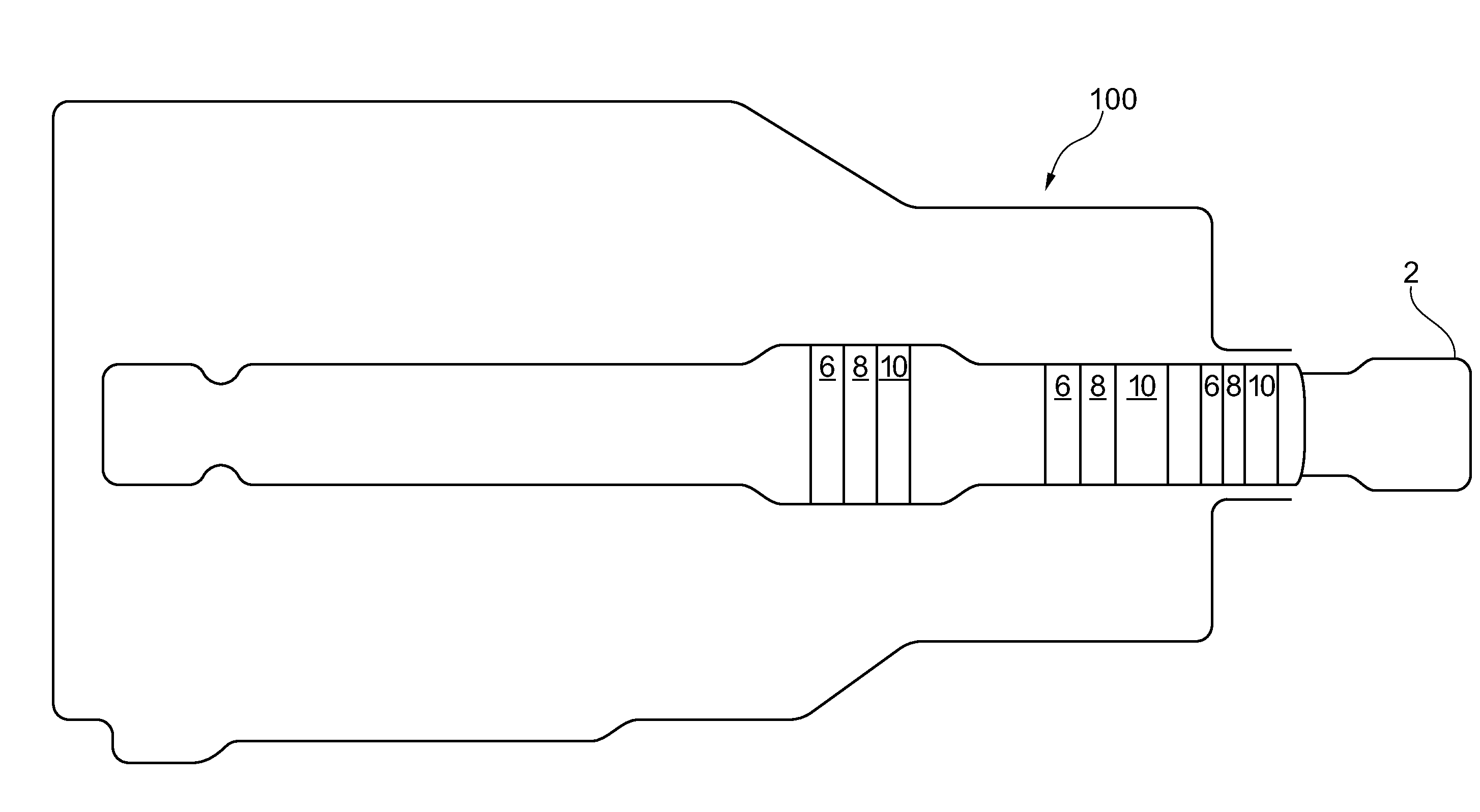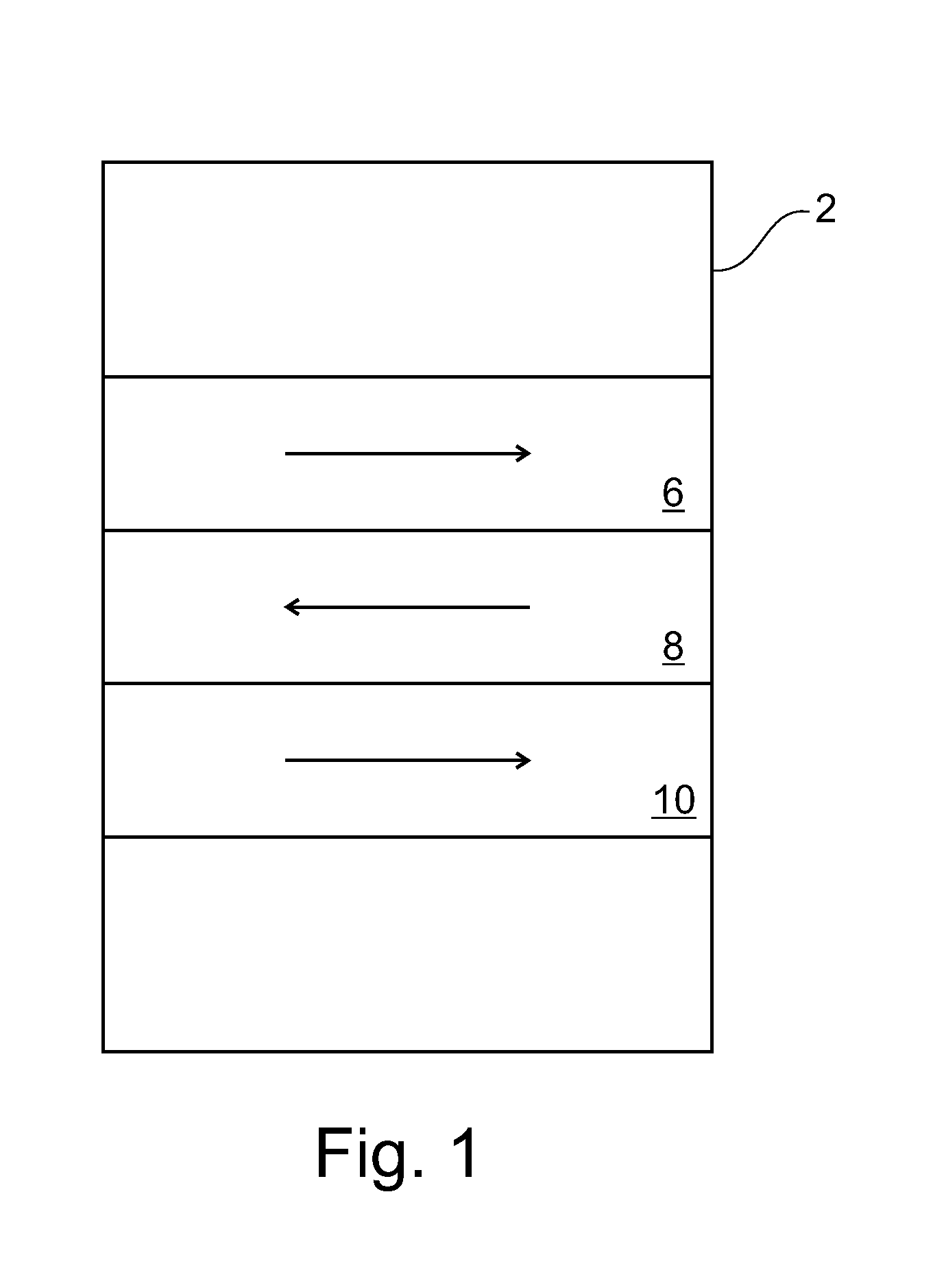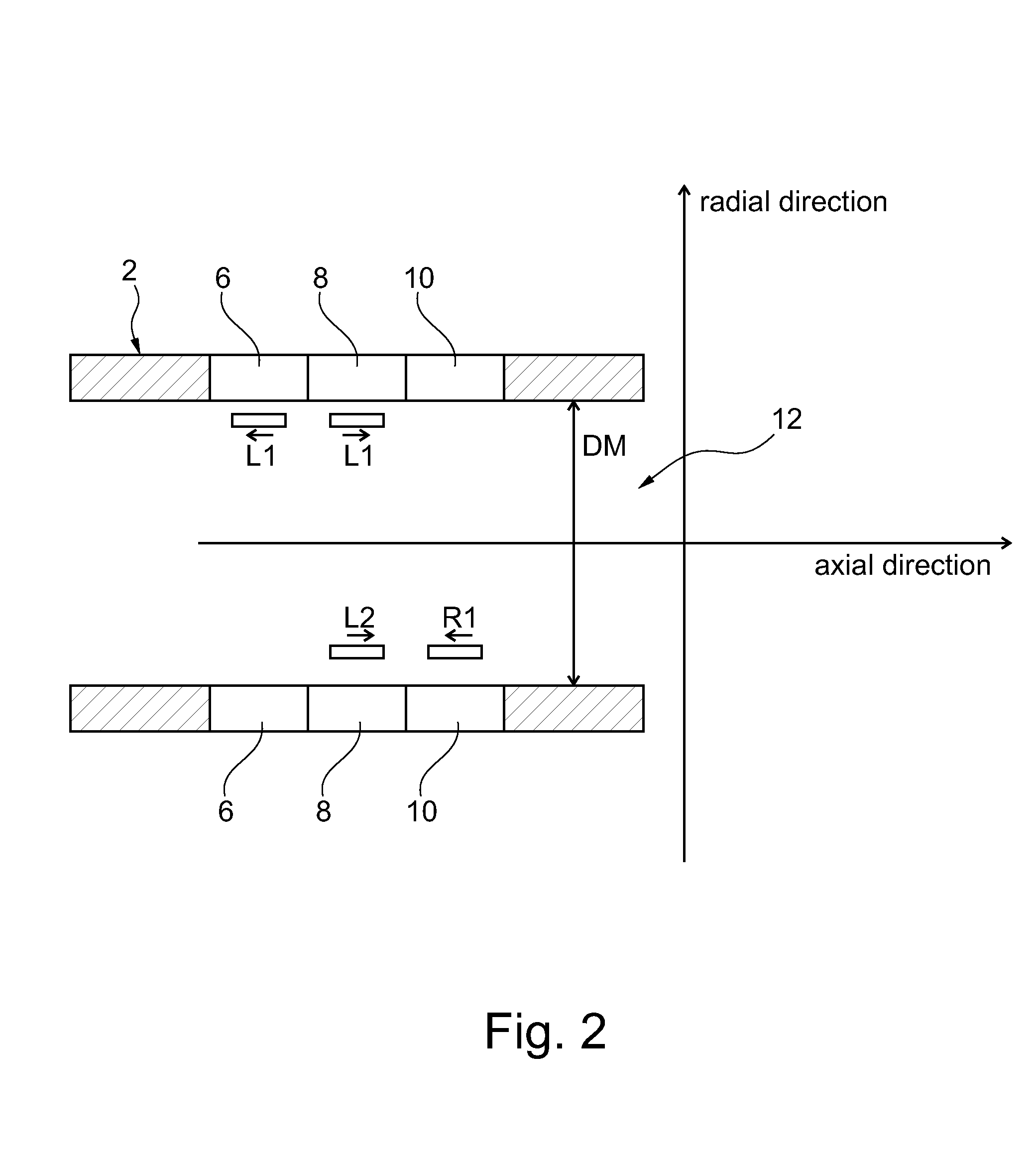Magnetoelastic Torque Sensor and Method
a magnetic torque and sensor technology, applied in the field of systems and methods, can solve the problems of false torque value, error-prone configuration of the invention disclosed in the '059 patent, and patents that are susceptible to other factors, so as to improve noise immunity, reduce installation space requirements for secondary sensors, and reduce the effect of weigh
- Summary
- Abstract
- Description
- Claims
- Application Information
AI Technical Summary
Benefits of technology
Problems solved by technology
Method used
Image
Examples
Embodiment Construction
[0067]FIG. 1 is a schematic diagram showing a hollow or partially hollow shaft 2 having three magnetized regions 6, 8, 10 according to an embodiment of the invention. The shaft 2 is magnetically conditioned so as to provide the regions 6, 8, 10, having remanent circumferential magnetizations in the shaft 2. The arrows indicate the direction of the circumferential magnetization. In this embodiment, regions 6 and 10 have the same direction, and region 8 which is in the middle has a magnetization in the opposite direction.
[0068]FIG. 2 is a schematic diagram showing the placement of primary magnetic field sensors C1 and C2 and secondary magnetic field sensors R and L inside the hollow shaft 2 (longitudinally extending member) having three magnetized regions 6, 8, 10. The shaft 2 has a cavity 12 in which the sensors C1, C2, R and L can be arranged. The primary and secondary magnetic field sensors C1, C2, R and L are placed close to the inner surface of the shaft 2 (i.e. the inner surface...
PUM
| Property | Measurement | Unit |
|---|---|---|
| frequencies | aaaaa | aaaaa |
| distance | aaaaa | aaaaa |
| distance | aaaaa | aaaaa |
Abstract
Description
Claims
Application Information
 Login to View More
Login to View More - R&D
- Intellectual Property
- Life Sciences
- Materials
- Tech Scout
- Unparalleled Data Quality
- Higher Quality Content
- 60% Fewer Hallucinations
Browse by: Latest US Patents, China's latest patents, Technical Efficacy Thesaurus, Application Domain, Technology Topic, Popular Technical Reports.
© 2025 PatSnap. All rights reserved.Legal|Privacy policy|Modern Slavery Act Transparency Statement|Sitemap|About US| Contact US: help@patsnap.com



